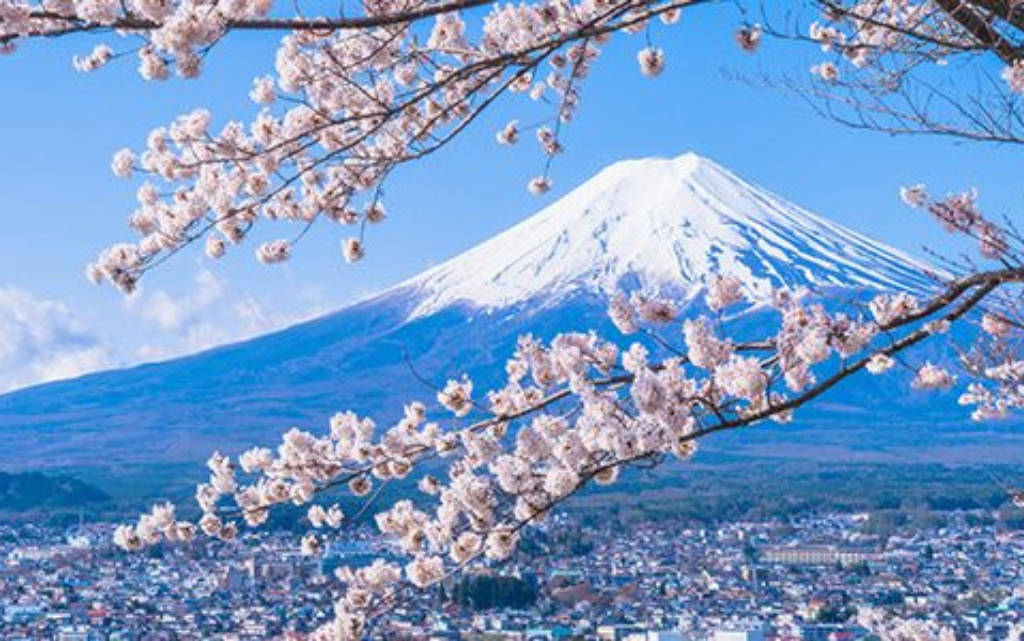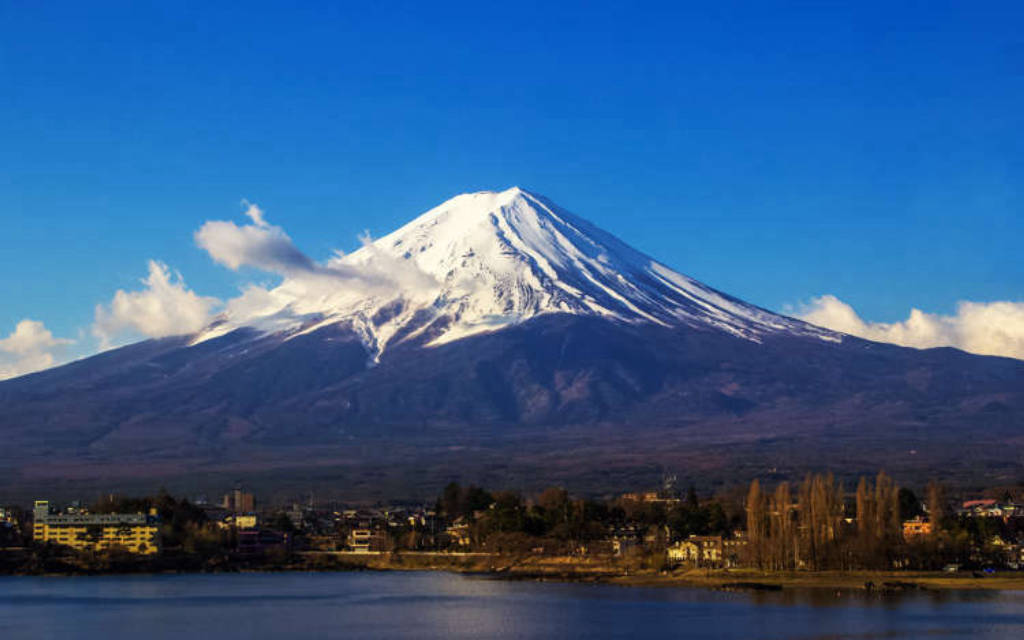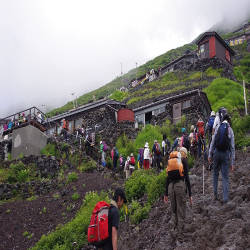Mount Fuji is a volcano located on the border between Yamanashi and Shizuoka prefectures.
Mount Fuji stands tall in the middle of the blue sky, creating a majestic and moving beauty. The majestic majesty of Mount Fuji has become a sacred symbol in the hearts of the Japanese people and is famous around the world. Mount Fuji was recognized as a World Heritage Site in 2013.
Mount Fuji is also a place where you can enjoy participating in outdoor activities. Besides, Mount Fuji is famous for the pure water that melts from the ice due to the heat of lava, so in the vicinity there are also many famous attractions related to geysers such as the Eight Oshino Hakkai Streams. , Fugaku Wind Cave, Aquarium with underground water from Mount Fuji
Mount Fuji, like many of the larger mountains in Japan, has an official climbing season. Usually early July to early September and usually closes around September 10. Mount Fuji has several climber routes and opening dates vary by trail, depending on snow speed. melt from the passes. The Yoshida Trail, which begins in Yamanashi Prefecture, is usually open first. The other three trails, all in Shizuoka Prefecture, are generally open later. If you plan to climb Mount Fuji at the beginning or end of the season, you should double check that it is open for climbing. You can check the official opening and closing dates at Mount Fuji's official website. (http://www.fujisan-climb.jp)
Climbing Mount Fuji during off-season is "prohibited", but not technically illegal. However, it is definitely not recommended for inexperienced climbers. Not only is it potentially more dangerous, especially when it starts to snow, but the huts and public toilets that dot the routes up the mountain are closed for the rest of the day. years, which means no shelter or stops along the way. It should be noted that deaths from climbing out of season — especially in winter — are relatively common, even among seasoned climbers with winter hiking experience. Fuji is often used as a training mountain for climbers preparing for the Himalayan peaks, and should not be taken lightly.
Hiking trails include:
1 . Yoshida Trail
This trail is the most popular, located in Yamanashi Prefecture - Along the way it has the most huts and vehicles for climbers and is the earliest open (around July 1st). If you are coming from Tokyo this is the easiest route and there is a direct bus service from Shinjuku to the fifth terminal. All this convenience comes at a cost - Choosing to take the Yoshida road is often crowded and prone to traffic jams, especially on weekends and during the Obon holiday in August. It is estimated to take about six hours to get there. up and four hours to go down.
2. Fujinomiya Trail This is the shortest and most direct route to the summit. It begins at a higher elevation than the other trails (at 2,400 meters, or 7,874 feet). This is also the steepest and most rocky trail to the top, but there are mountain huts at each station. This trail does not offer a view of the sunrise path, so if your aim is to see the sunrise, you need to make sure you get to the top in time! Estimated hiking time is five hours to go up and three hours to descend, and it attracts about half as many climbers as the more popular Yoshida Trail.
3. Subashiri Trail This trail starts in Shizuoka and then joins the Yoshida Trail from about the eighth station. This is a relatively gentle climb, with more trees than any other. The trailhead starts a little lower, at 2,000 meters (about 6,562 feet) and takes about six hours to go up and three hours to descend.
4. Gotemba Trail This trail is by far the longest of the four to the top. It also starts at the lowest elevation (1,450 meters, or about 4,757 feet), but is a relatively comfortable slope. This trail is not recommended for beginners or not interested in hiking as it takes more time and there are fewer huts along this trail. The trail's 5th station is also the least developed, with only a small shop and toilets. On the other hand, the number of climbers is much less, as they receive only about 10% of the traffic of the Yoshida trail. Estimated about seven hours to rise and three hours to fall.
There are 4 climbing gates at Mount Fuji and you can go by bus or car from there. However, in the high season, there will be restrictions on cars, so using the bus will be much more convenient.
Depending on the climbing gate, there will be separate appropriate bus routes from Haneda airport or stations:
- Gotemba on the JR line;
- Shinmatsuda on the Odakyu Line;
- Fujisan, Kawaguchiko on the Fuji Kyuko Line;
- Mishima is on the JR Tokaido Main Line;
- Shinfuji is on the JR Tokaido Shinkansen line .
Want to experience mountain climbing. You should carefully research the station closest to the climbing gate you choose before departing.
There are a number of different climbing plans for your reference assuming the fifth station starts.
Sunrise Plan Most people, especially on their first ascent, start climbing around midday or late afternoon. Aim to arrive at the eighth terminal in the early evening hours and stay in an overnight hut where you can eat a small meal and rest or sleep, although said huts are often crowded with commuters other long distances. Wake up in the middle of the night to begin your final journey to the top, that way you can reach the top when the sun rises. The advantage of this option is being able to see the sunrise from above, no doubt. The downside is practically everyone else is doing the same thing, so it's crowded. Care should be taken when reserving your hut in advance.
Sunset/ Sunrise Plan Another alternative is to start climbing much earlier in the day to get to the top to witness the sunset. After watching the sunset from above, climb back to one of the huts (usually at the eighth station) and spend the night there, getting up early enough to watch the sunrise from the hut. It's important to make sure you choose a route that actually offers views of the sunrise beyond the summit. After the sun rises the rest of the way, get ahead of the sunrise crowds at the top.
There are many regulations for climbing and are subject to change so you should check the detailed information on the Mt Fuji homepage before going and it is best to hire a professional Local Guide to guide you or buy a tour from a travel agent
 Register
RegisterSign in Travel Agent
Sign in Supplier
Sign in Affiliate
Sign in Guru







 Tokyo - Japan
Tokyo - Japan